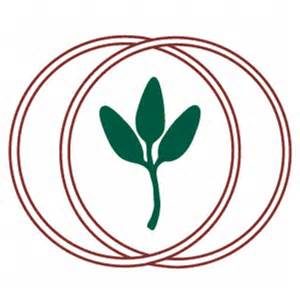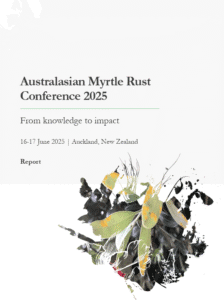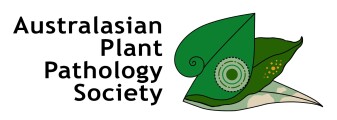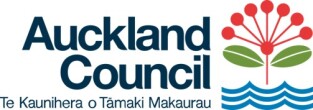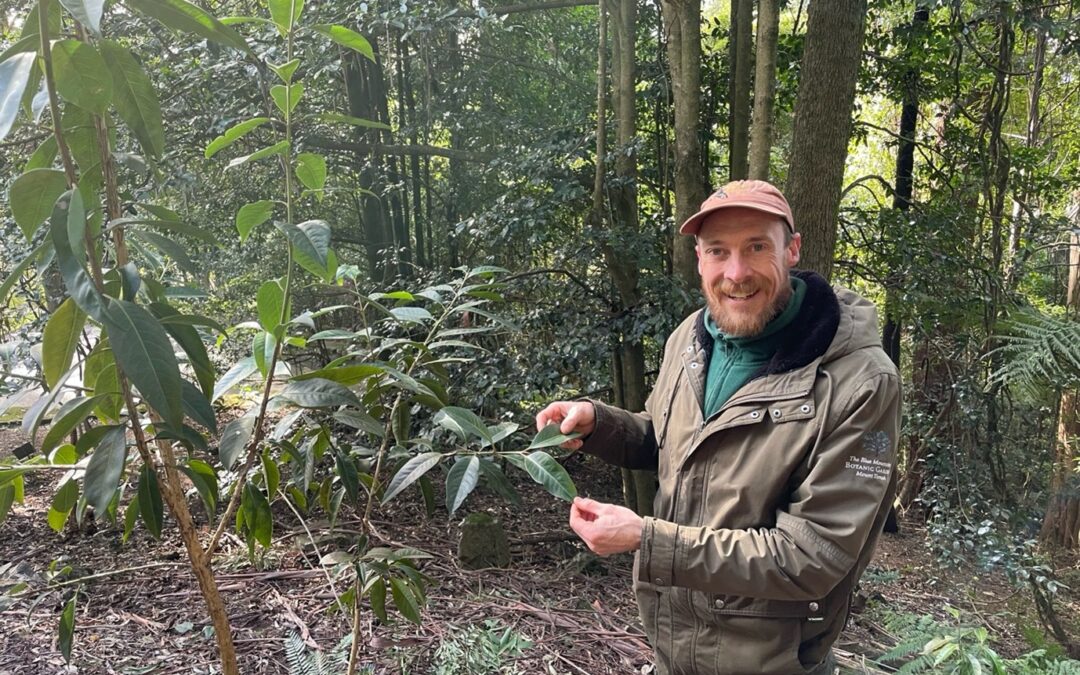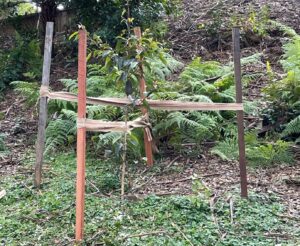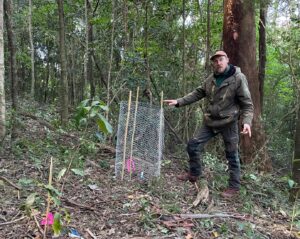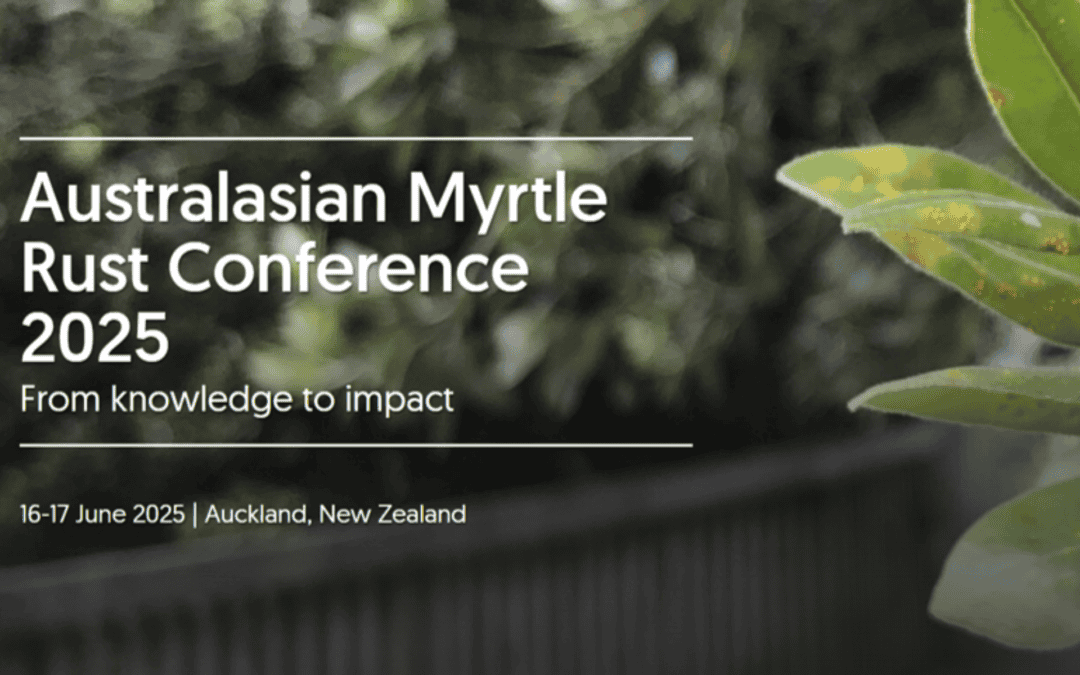
Australasian Myrtle Rust Conference 2025
In collaboration with Manaaki Whenua Landcare Research and Waipapa Taumata Rau University of Auckland the second Australasian Myrtle Rust Conference was held 16-17 June 2025 in Auckland, New Zealand.
The conference program including speaker abstracts is available here.
The Australian Government commissioned a report summarising the Australasian Myrtle Rust Conference 2025 proceedings to provide an overview of the current state of Myrtle Rust for the Australasian region as discussed during the conference.
Download the Conference Report here.
Conference presentation recordings are now available on the ANPC Youtube channel:
Many of Australasia’s best-known and most highly valued native trees – from Australia’s eucalypts to Aotearoa New Zealand’s pōhutukawa – are in the family Myrtaceae. Many species in this family urgently need protection from Myrtle Rust, a disease caused by the globally dispersed pathogen Austropuccinia psidii.
Collaborative research efforts have improved our understanding of our myrtles, the pathogen, and plant/pathogen interactions. Management tools have been developed and deployed, and communities are rapidly mobilising to protect and conserve native plants.
Researchers and community members from across Australia and Aotearoa New Zealand came together with an exciting line-up of talks on 16 and 17 June 2025, to share knowledge and celebrate our mighty myrtles and the progress made towards protecting them. The Australian Government commissioned the above report of the proceedings. Read the report for an overview of the current state of Myrtle Rust for the Australasian region, as discussed during the conference, and to learn about the latest research and management approaches.
The conference themes were:
- Community-led action
- New technologies, solutions, and research insights
– Part 1: Tools and fungal genetics
– Part 2: Environmental and microbial insights - Species conservation
- Early career initiatives and research
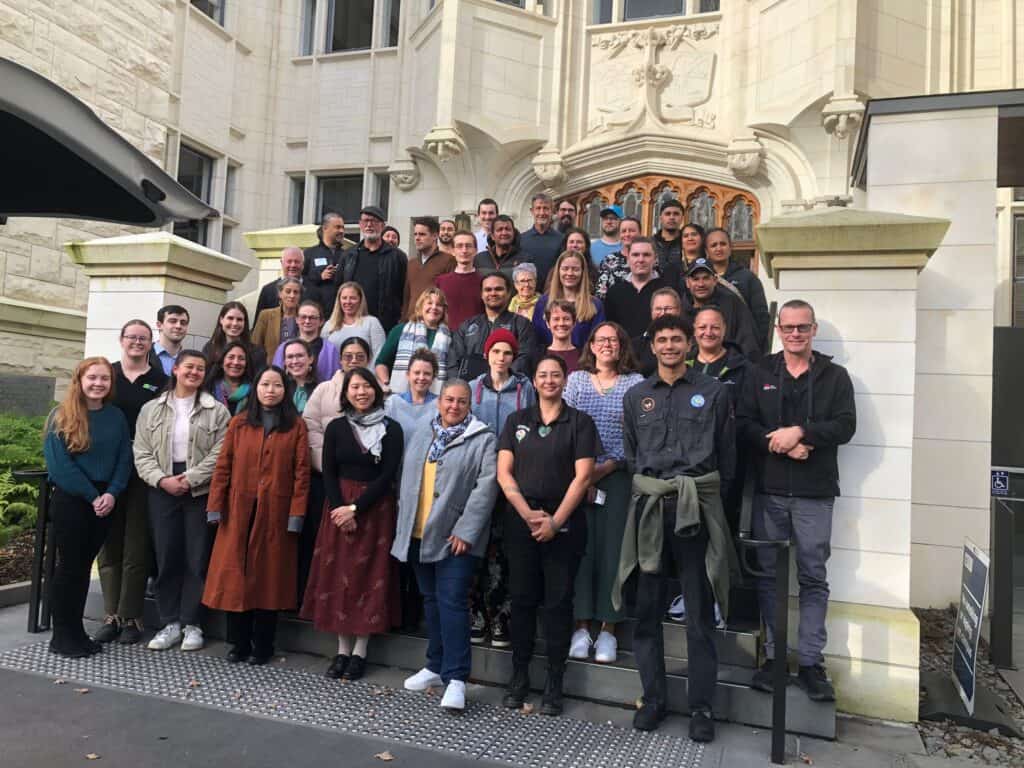
Australasian Myrtle Rust Conference 2025 presenters and in-person attendees. Credit: Jenny Leonard.
A huge thanks to our sponsors!
Online/virtual attendance was free thanks to support from our wonderful sponsors. Our sponsors were also exceptional facilitators of inclusion. By covering overhead costs and sponsoring bursaries, they allowed the organising committee to focus on what matters: ensuring that a broad range of voices from many backgrounds and regions were present and engaged with the conference.
Our hosts
Our hosts provided unquantifiable services that allowed us to cut costs significantly and focus on what matters.
Platinum sponsors
Provided travel and accommodation bursaries for students, mana whenua, and First Nations Australians.
Gold sponsor
Auckland Council provided conference support and enabled local community and mana whenua attendance.
Bronze sponsors – thanks for your support!
The Australasian Myrtle Rust Conference Committee would like to acknowledge and thank Jenny Leonard for her enormous contribution in ensuring a successful event, and for writing the AMRC2025 report.
